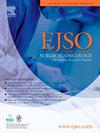The exciting journey of progress: Exploring FIGO 2023 staging for endometrial cancer at a leading ESGO institution
IF 3.5
2区 医学
Q2 ONCOLOGY
引用次数: 0
Abstract
Introduction
The 2023 FIGO staging of endometrial cancer integrates tumor grade and histology along with molecular features that recognize the prognostic significance of p53 and POLE mutations, accounting for potential conflicts such as lymphovascular space invasion and subserosal invasion.
Materials and methods
In this single-institution retrospective study, data were collected on 229 endometrial cancer patients from January 2020 to September 2024 and re-stage them according to FIGO 2023 criteria.
Results
From FIGO stage 2009 IA, 70 patients do not cross stage (21 are FIGO 2023 IA1 and 49 IA2), 8 patients are upgraded to FIGO IC because of aggressive histotype; 1 is upstaged because of substantial LVSI, and 12 because of aggressive myoinfiltrating tumors (23 % of upstaging). From FIGO 2009 stage IB 34 patients remain in FIGO 2023 IB, while 5 become stage IIB (LVSI) and 27 IIC (aggressive myoinfiltrating), for a total of 32 upstages (48 % of upstaging). Within FIGO 2009 stage II, no proper upstage was possible. We observed a statistical correlation between stages and BMI, as well as between stages and age, for both FIGO 2009 (p = 0.009 and p < 0.001 respectively) and FIGO 2023 (p = 0.002 and p = 0.003 respectively) classifications. Additionally, a correlation was found between tumor grade and BMI (p = 0.02).
Conclusions
The FIGO 2023 staging system is gaining importance as recent studies highlight the role of molecular classification in prognosis and personalized therapy. Updating our study's follow-up data will clarify its impact in clinical practice.
求助全文
约1分钟内获得全文
求助全文
来源期刊

Ejso
医学-外科
CiteScore
6.40
自引率
2.60%
发文量
1148
审稿时长
41 days
期刊介绍:
JSO - European Journal of Surgical Oncology ("the Journal of Cancer Surgery") is the Official Journal of the European Society of Surgical Oncology and BASO ~ the Association for Cancer Surgery.
The EJSO aims to advance surgical oncology research and practice through the publication of original research articles, review articles, editorials, debates and correspondence.
 求助内容:
求助内容: 应助结果提醒方式:
应助结果提醒方式:


